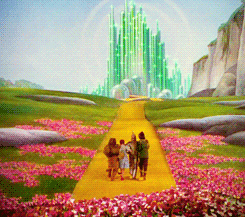What do you think?
Rate this book


Swept away from her home in Kansas by a tornado, Dorothy and her dog Toto find themselves stranded in the fantastical Land of Oz. As instructed by the Good Witch of the North and the Munchkins, Dorothy sets off on the yellow brick road to try and find her way to the Emerald City and the Wizard of Oz, who can help her get home. With her companions the Scarecrow, the Tin Woodman and the Cowardly Lion, Dorothy experiences an adventure full of friendship, magic and danger. A much-loved children's classic, The Wizard of Oz continues to delight readers young and old with its enchanting tale of witches, flying monkeys and silver shoes.
154 pages, Paperback
First published May 17, 1900
Dorothy is a young girl who lives with her aunts in a small farm in Kansas. Due to a tornado, she is catapulted with her house in a freaky village...
Dorothy's journey, which I discovered at 38 thanks to my daughter and to the well-established habit of reading something to her before going to bed, begins in this way. The thing that impressed me most about this wonderful story is that the title "The Wonderful Wizard of Oz" is rather misleading. Yes, because Oz is neither the protagonist of the novel nor the ultimate goal of Dorothy's journey. Oz appears more or less at half of the novel, and he remains in the story for no more than 50 pages. Surely, Dorothy and her cheerful company start the search for the wizard of Oz almost immediately. However, the story that involves directly or indirectly Oz ends in an unexpected way, almost prematurely, and in my opinion this is a strenght of the story. When Oz disappeared from the story, it was funny to see the confused face of my daughter saying:
«WHAT? HE'S GONE?? HOW IS IT POSSIBLE?!?»and I realized how successful was L. Frank Baum's attempt to mislead the readers.
Young people heartly fantasize. Me too.
Vote: 8

Dorothy è una fanciulla che vive con gli zii in una piccola fattoria nell'Kansas. A causa di una tromba d'aria, la sua abitazione viene catapultata con lei dentro in paese quanto meno bislacco...
Comincia così il viaggio di Dorothy, che ho scoperto a 38 anni suonati grazie a mia figlia e all'abitudine ormai consolidata di farsi leggere qualcosa prima di andare a letto (non la trasposizione cinematografica, quella la conoscevo già). La cosa che più mi ha colpito di questo splendido racconto è come il titolo "Il meraviglioso mago di Oz" sia fuorviante. Si, perchè Oz non è nè il protagonista nè l'obiettivo finale della ricerca della piccola Dorothy. Il personaggio di Oz appare più o meno a metà racconto, e ci rimane per non più di 50 pagine. Di sicuro la ricerca del mago di Oz comincia quasi fin da subito da parte della piccola Dorothy e della sua allegra compagnia. Tuttavia la vicenda che coinvolge direttamente o indirettamente Oz si conclude in maniera inaspettata, quasi prematuramente, e questo secondo me è un punto di forza del racconto. Con l'uscita di scena del mago di Oz, vedere la faccia spiazzata di mia figlia che dice:
«Ma come! Se n'è andato? COME E' POSSIBILE???»è stato divertente, appagante, e mi fa capire quanto sia riuscito il tentativo di L. Frank Baum di spiazzare i lettori.
Fantasticano assai i più piccoli. E anche io.
Voto: 8















